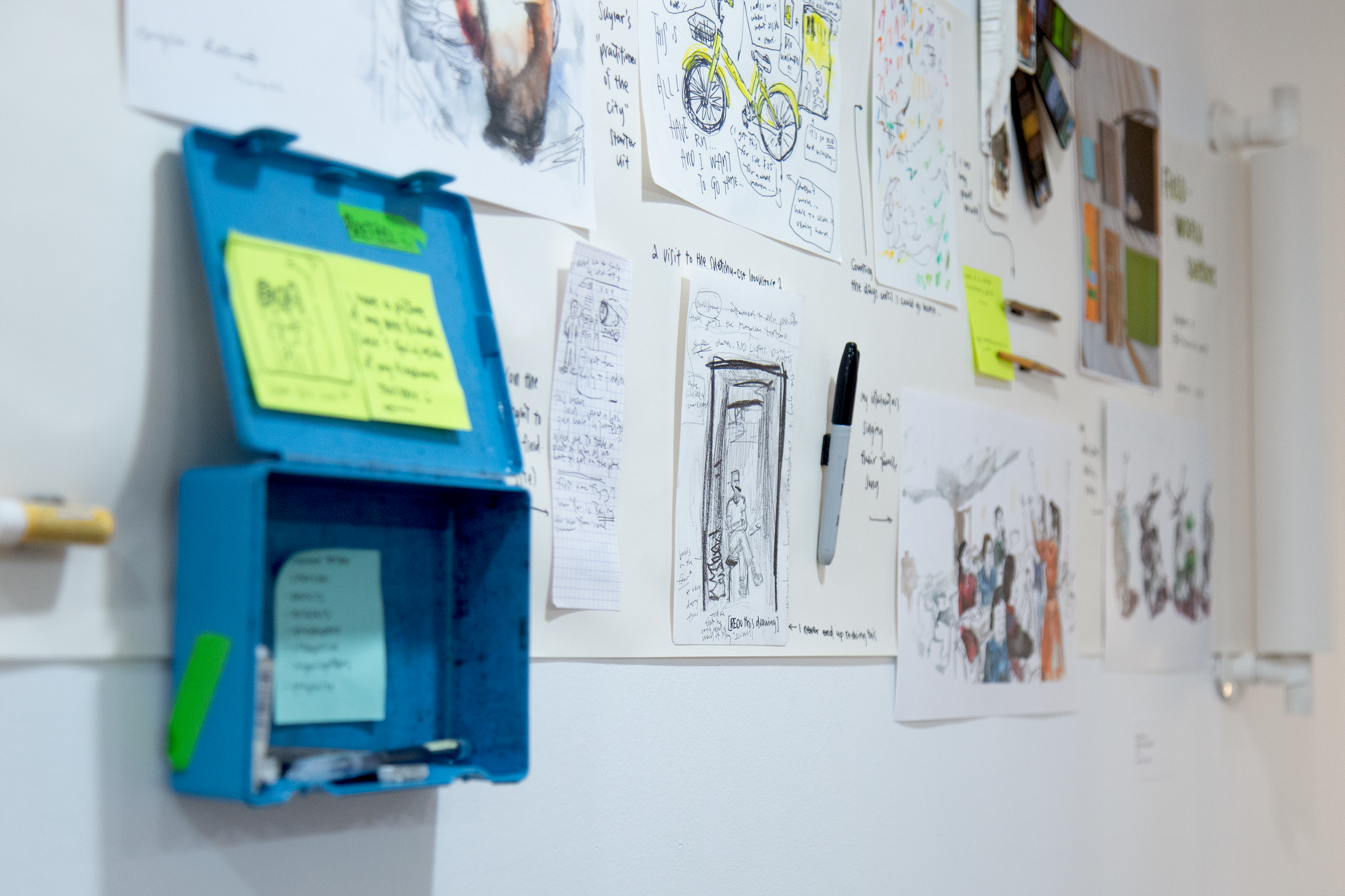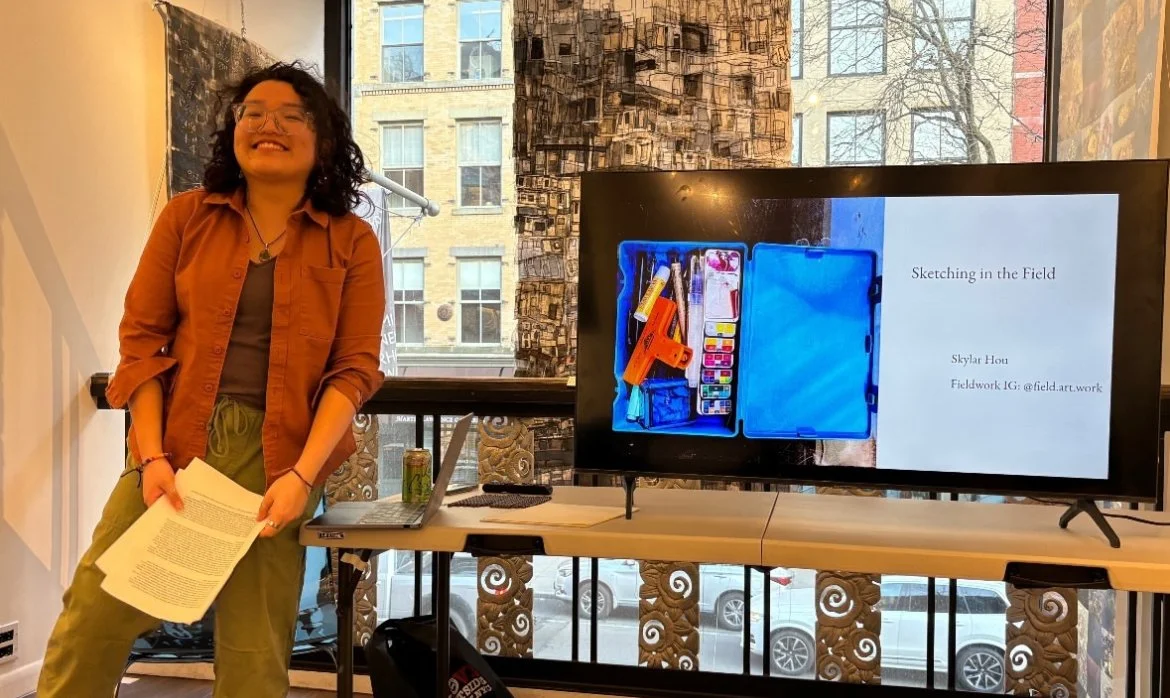photo by Junyao Huo
Art in the Field
I use fieldwork sketches to navigate the balance between making my interlocutors not be identifiable but to be seen. I recognize that writing about my fieldwork in any form is political and have the potential to be differently interpreted and appropriated by local factions in pursuit of their own agendas. By using sketches as my exclusive visual medium for capturing fieldwork moments and people, I take advantage of the arbitrariness and the embedded creative assumptions within this artistic process.
Sketching in the Field.
multimedia art-piece and workshop presentation.
Being Human Group Exhibition. ModA Curations.
Perseus Gallery, New York. Mar 17 -20, 2024
I offered a glimpse into my process as an anthropologist who sketches in the field. Drawing from my research in China, I shared that sketching, for me, was a haven for personal emotions, a form of witnessing, as well as a tool for translating anthropology to my interlocutors.
I invited the audience to participate in a mini workshop, where we collectively transformed the gallery into a field site. Together, we engaged in participant observation through sketching. Following our sketching session, we engaged in a brief discussion, exploring the richness of the anthropological way of seeing. We highlighted the diverse perspectives each individual brought to their observations within the same temporal and spatial context.
photo by Yu Jiang (ModA curations)
photo by Emma Linghwei Young
Drawing Anonymity: Exploring Drawings in Activism-Involved Fieldwork
Fieldwork Sketches, Royal Anthropological Institute
London, United Kingdom. Feb 16, 2024.
In this presentation, I describe the moments I sketched in my fieldwork to explore what we may learn about anthropology’s humanizing endeavor, especially amongst political sensitivities. Because I consider my research as a collaboration between myself as an ethnographer and my interlocutors, I try to balance their desire in securing their external confidentiality in case of future repercussions. and at the same time to make sure that they are represented, their stories are known. I also talk about what may be produced out of documenting moments through sketches, as something that we, as researchers, experiences with others in doing ethnographic works, in showing that we care and that we really see these people. I draw from the concepts of portraiture as methodology by Sara Lawrence-Lightfoot; Micheal Taussig’s sketching in the field as witnessing, and ideas about representation and anonymity to work through an explanation.
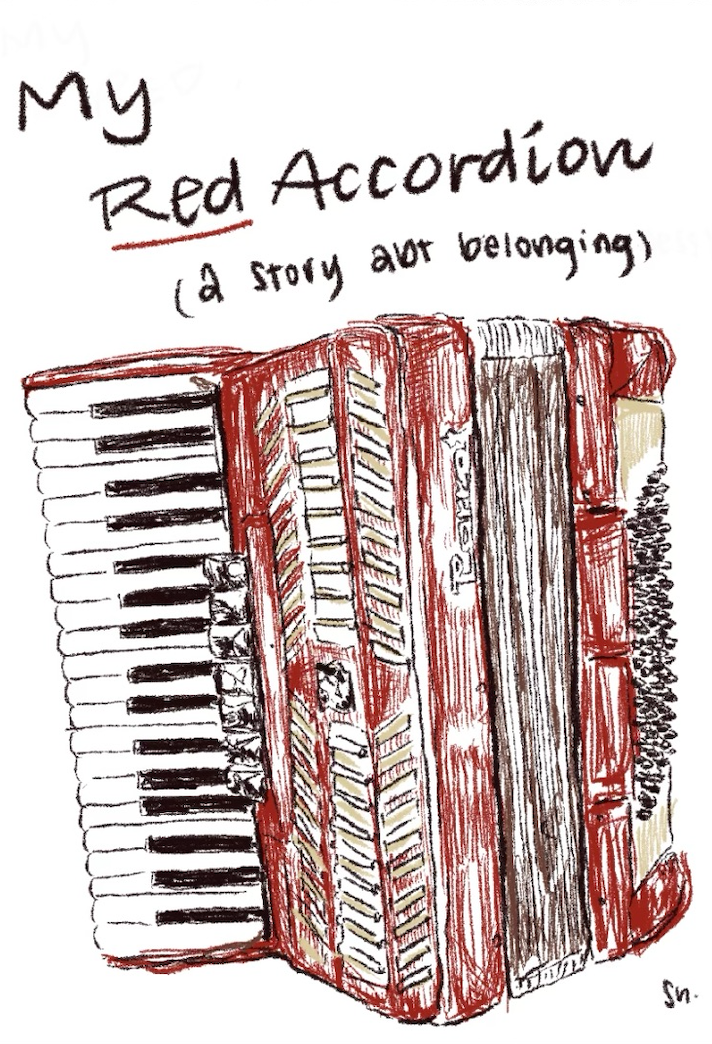
My Red Accordion (zine. 2023.) cover
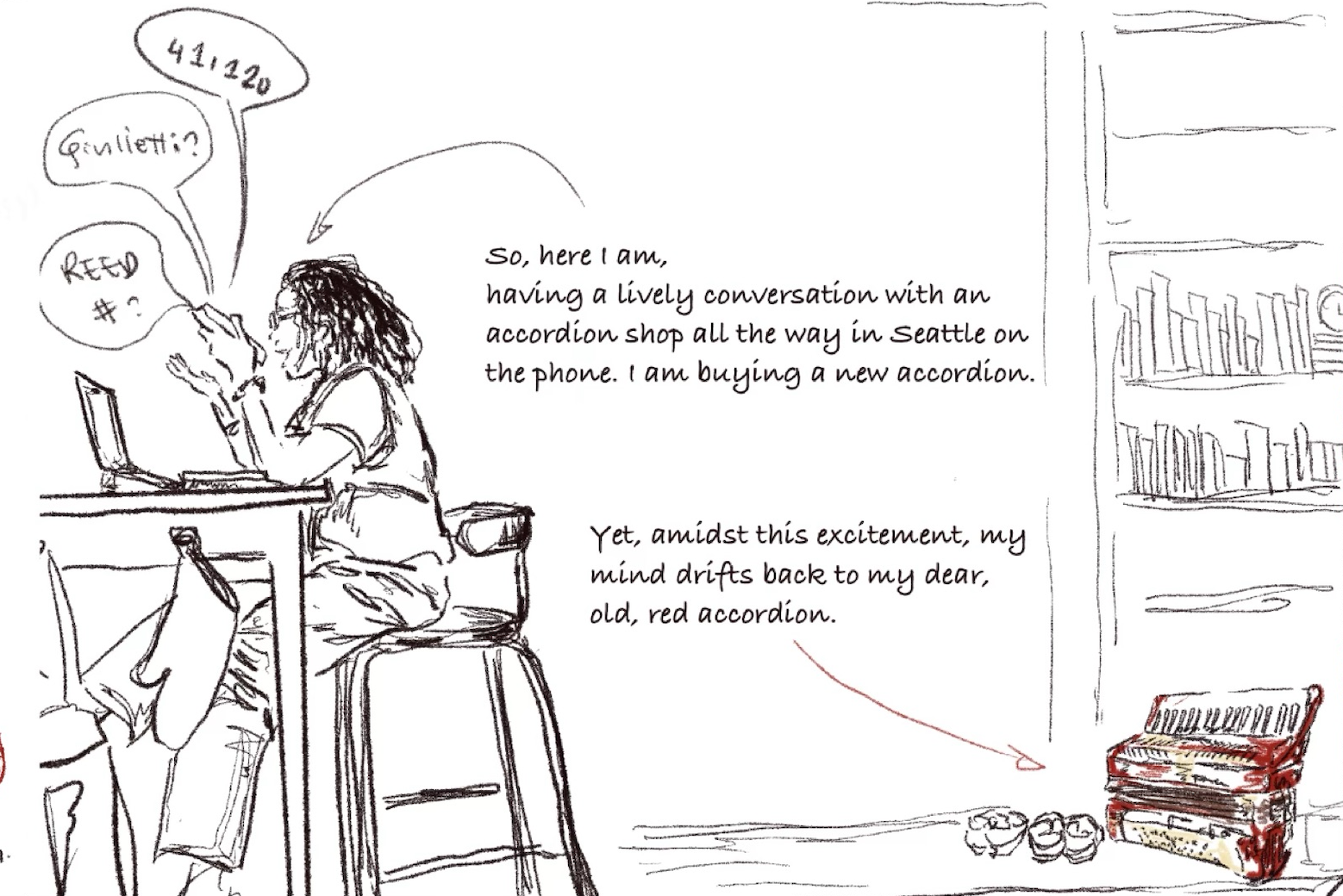
My Red Accordion (zine. 2023.) p. 1 - 2
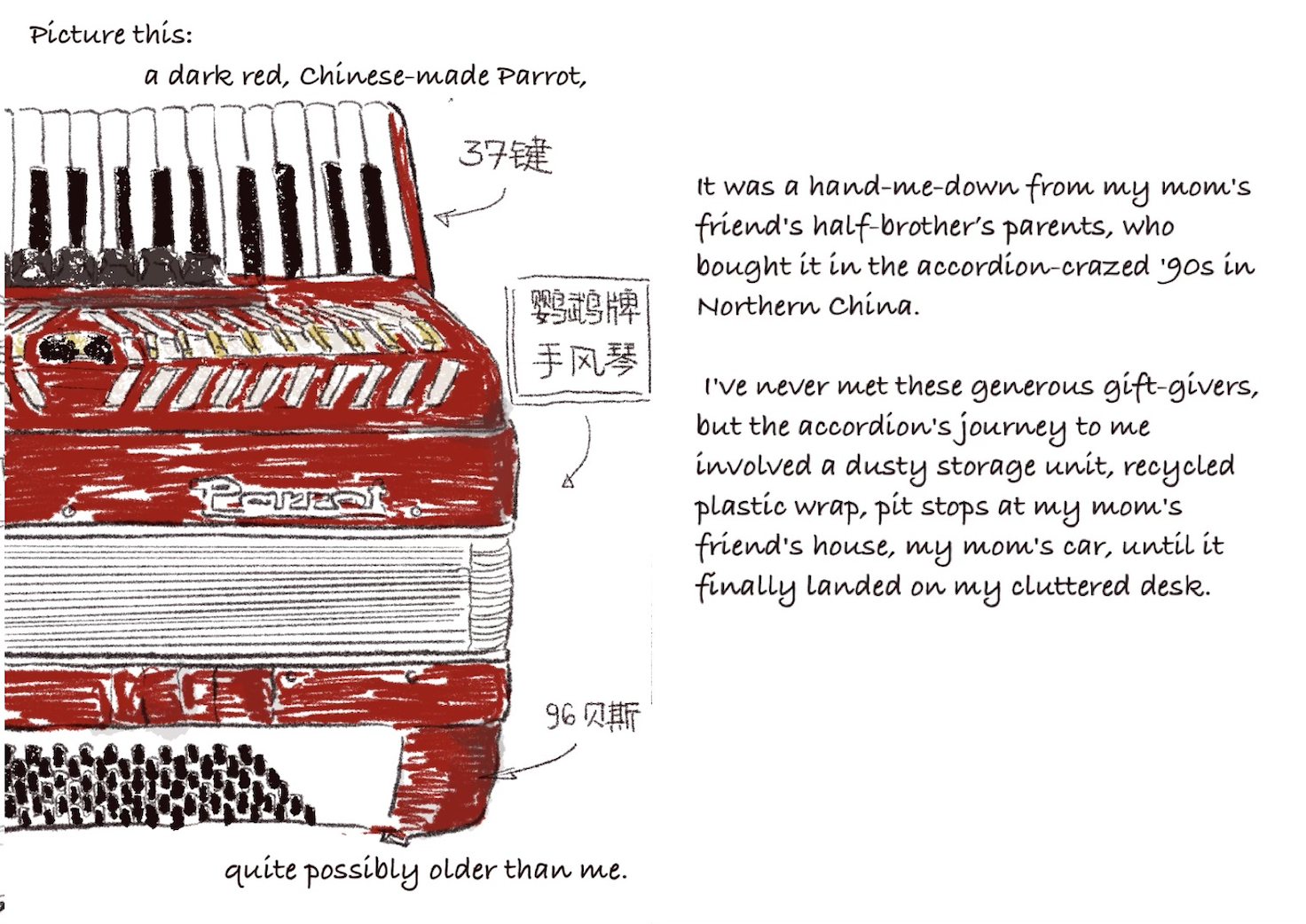
My Red Accordion (zine. 2023.) p. 3 - 4

My Red Accordion (zine. 2023.) p. 5 - 6

My Red Accordion (zine. 2023.) p. 7 - 8
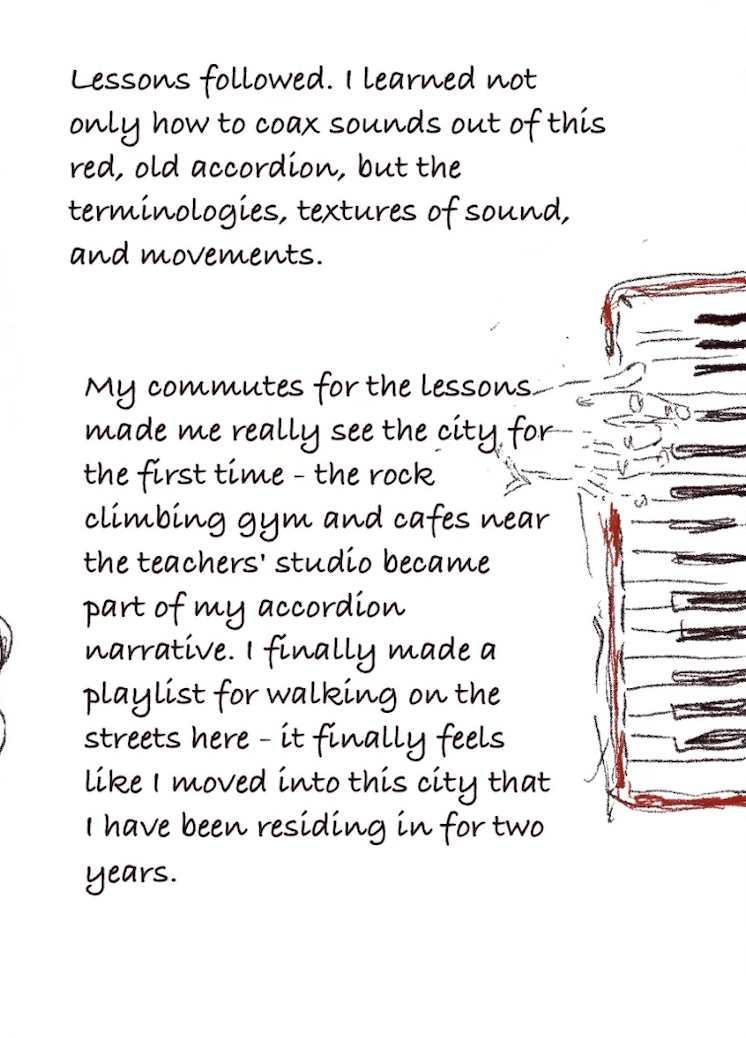
My Red Accordion (zine. 2023.) p. 9

My Red Accordion (zine. 2023.) p. 10 - 11

My Red Accordion (zine. 2023.) p. 12 - 13
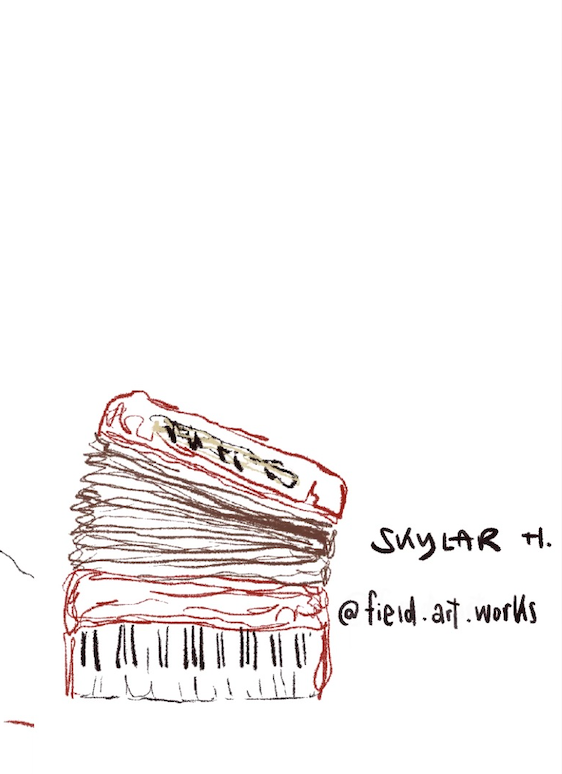
My Red Accordion (zine. 2023.) p. 14 (end)

